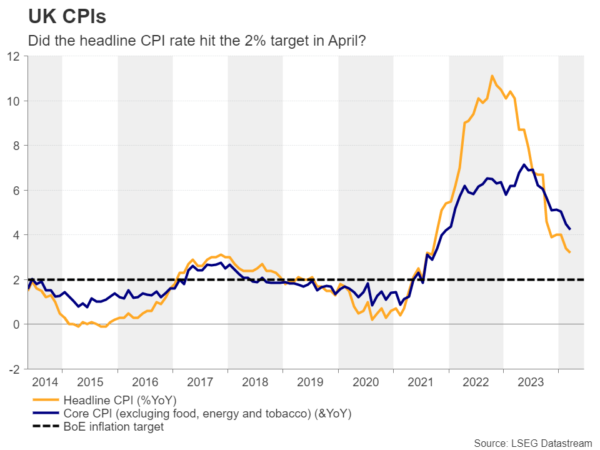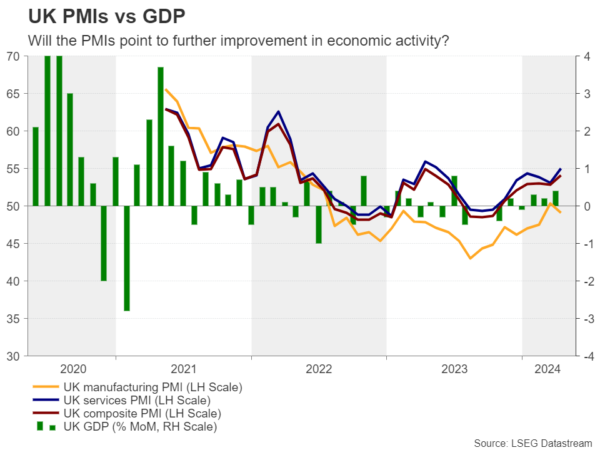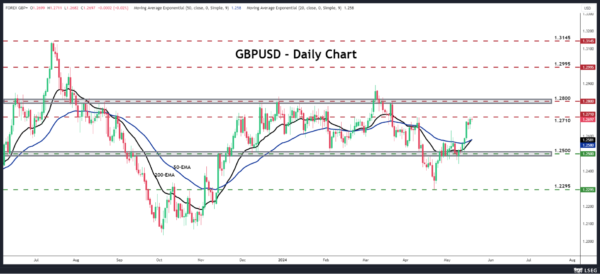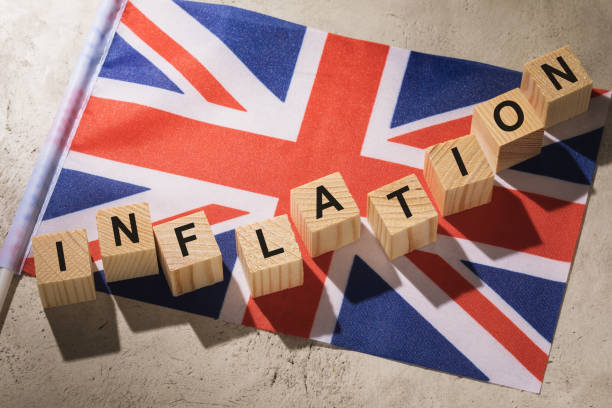- Investors assign 60% chance for a June rate cut by the BoE
- UK CPI data to reveal whether inflation hit the BoE’s target
- But PMIs imply some upside risks
- The data is scheduled for Wednesday at 06:00 GMT
BoE appears more dovish than expected
While a few weeks ago investors were convinced that the European Central Bank (ECB) may be the first major central bank to start lowering interest rates, the latest developments seem to have somewhat mixed up the picture instead of clearing it. Yes, the ECB is still largely anticipated to deliver its first 25bps rate cut in June, but now there is a decent 60% probability for the Bank of England to do so as well.
Market participants have been ramping up their rate-cut bets after the central bank appeared more dovish than expected at its latest gathering, leaving interest rates unchanged but with two members voting for a 25bps reduction. In the statement accompanying the decision there was an addition saying that they will consider forthcoming data releases and how these inform the assessment that the risks from inflation persistence are receding. Combined with the downward revisions in the inflation projections, this suggested that officials believe inflation will continue easing towards their objective.

Did inflation hit 2% in April?
However, just the day after the decision, data revealed that the UK economy rebounded more than expected in Q1, after slipping into recession during the second half of 2023, while the following week, the employment report pointed to hotter-than-expected wage growth in March, raising some concerns on whether inflation could hit the BoE’s 2% target any time soon.
With that in mind, next week’s CPI numbers for April may attract special attention, especially with the BoE itself expecting the data to show that the headline CPI has already fallen near its objective of 2% in April, largely due to a drop in regulated energy prices. That said, the Bank also forecasted that inflation would rebound again later in 2024, although it revised down its projections from last time.

PMIs point to some upside risks
According to the PMIs for the month, prices charged inflation across the service sector, which accounts for around 80% of total UK GDP, eased to a three-year low, suggesting that indeed inflation may have continued slowing at a fast pace. Nonetheless, the manufacturing survey revealed that cost pressures are growing and feeding through to higher selling prices at the factory gate, which means that goods’ prices may not be cooling as fast as prices in the service sector.
This implies that there is the risk of the headline rate not falling close enough to the BoE’s target and indeed, in the PMI reports it was noted that the overall output charge inflation eased slightly since March. Thus, if the headline rate does not fall to 2% as analysts are also projecting, and the core CPI proves to be somewhat stickier than expected, the pound may gain ground as the probability for a rate cut in June could decline somewhat.
PMIs and retail sales also in focus
Even if UK inflation drops to 2% as projected, a set of better-than-expected PMIs for May on Thursday, could still allow a question mark hanging over a June rate cut. The UK economy grew more than anticipated in Q1, and should the PMI suggest that it continues to perform well, investors may see less need for a rate reduction in June and thereby erase a portion of Wednesday’s CPI losses. After all, ahead of the June gathering, traders will have to examine and digest another CPI report. Friday’s retail sales may also be monitored for gauging the health of the economy.

Will pound/dollar break above 1.2800 soon?
From a technical standpoint, pound/dollar has been in a recovery mode since April 22. However, for the medium-term outlook to be considered overly bullish, the pair may need to overcome the key barrier of 1.2800, which stopped the bulls from drifting north on multiple occasions in the recent past.
Such a break may encourage advances towards the high of July 27 at 1.2995, the break of which could curry extensions towards the high of July 14 at around 1.3145. For the picture to darken, a drop below the 1.2500 zone may be needed.










